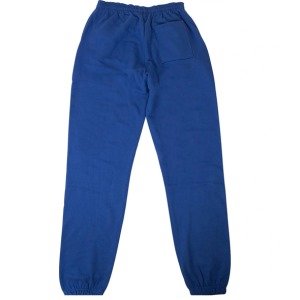When it comes to choosing the right mat for your workout, two popular options come to mind: yoga mats and exercise mats. Though both serve the same primary function—providing a cushioned surface for various physical activities—they differ significantly in terms of design, material, and intended use. If you’re wondering which one best suits your needs, this article will break down the differences and help you make an informed decision.
Understanding Yoga Mats
Yoga mats are specifically designed for yoga practices, which often involve holding poses for extended periods and focusing on alignment and breathing. These mats provide a stable and non-slip surface, crucial for maintaining balance during yoga poses.
Key Features of Yoga Mats
- Thickness: Yoga mats tend to be thinner, generally ranging from 3mm to 6mm. This provides enough cushioning while allowing for better stability and connection to the floor.
- Material: Most yoga mats are made of PVC, TPE, or natural rubber. These materials are chosen for their non-slip surface, lightweight nature, and eco-friendly options.
- Surface Texture: Yoga mats typically feature a textured surface to prevent slipping, which is important for maintaining proper posture and avoiding injuries.
Understanding Exercise Mats
Exercise mats, on the other hand, are designed for a broader range of workouts, including strength training, stretching, and high-impact exercises. These mats are often thicker and more durable than yoga mats to provide extra cushioning and support for exercises like sit-ups, push-ups, or weightlifting.
Key Features of Exercise Mats
- Thickness: Exercise mats are typically thicker, with most ranging from 6mm to 15mm. This added thickness helps absorb impact and protect joints during high-impact activities.
- Material: These mats are often made from EVA foam, PVC, or even closed-cell foam. They are designed to provide more shock absorption, making them ideal for exercises that involve jumping or intense movements.
- Durability: Exercise mats are generally more durable, designed to withstand the wear and tear of rigorous workouts.
Yoga Mats vs Exercise Mats: Comparing the Two
While both types of mats offer cushioning, they serve different purposes, and the choice depends on the type of activity you’re planning to do.
1. Thickness and Cushioning
- Yoga Mats: Yoga mats are designed to be thin to provide a stable surface for balance-based exercises. This thinner design allows for better connection to the floor and prevents instability.
- Exercise Mats: Exercise mats are thicker to provide extra cushioning for exercises that involve more intense movements or prolonged contact with the ground.
2. Material and Durability
- Yoga Mats: Yoga mats are often made from eco-friendly materials like PVC or natural rubber. These materials are designed for comfort and grip during low-impact activities.
- Exercise Mats: Exercise mats are typically made from more durable materials like EVA foam or PVC, designed to handle the wear and tear from high-impact exercises like jumping or running in place.
3. Grip and Traction
- Yoga Mats: Yoga mats have textured surfaces that ensure your hands and feet stay in place during poses, preventing slips during movements like downward dog or warrior pose.
- Exercise Mats: While exercise mats may have a textured surface, they focus more on cushioning and shock absorption than providing traction for static poses.
When to Choose a Yoga Mat
If you’re primarily focused on yoga, Pilates, or stretching exercises, a yoga mat is your best bet. The non-slip surface and thinner design will help you maintain your posture and perform movements with greater stability. Yoga mats are especially beneficial if you need a more lightweight and portable option.
When to Choose an Exercise Mat
If your workout routine includes high-impact exercises, weight training, or activities that require more cushion, an exercise mat is the right choice. The thicker design will protect your joints from stress and provide greater comfort for exercises like crunches, squats, and lunges.
FAQs
1. Can I use a yoga mat for high-impact exercises?
While yoga mats are great for low-impact exercises, they might not provide the necessary cushioning for high-impact workouts like jumping jacks or running in place. If you’re planning to engage in these types of exercises, an exercise mat with more thickness and shock absorption is a better option.
2. Are exercise mats good for yoga?
Exercise mats can be used for yoga, but they may not offer the same level of traction and stability as a dedicated yoga mat. If yoga is your primary activity, it’s recommended to invest in a mat designed specifically for that purpose, as it will provide better grip and stability during poses.
Conclusion
In the battle of yoga mats vs exercise mats, the right choice comes down to the activities you plan to do. If your focus is yoga or low-impact activities, a yoga mat provides the comfort, traction, and portability you need. However, for more rigorous exercises like strength training or cardio, an exercise mat is a better choice due to its added cushioning and durability.
If you’re recovering from an injury or using electrotherapy rehabilitation physiotherapy products, choosing a mat with proper cushioning can provide additional comfort and support during your sessions. Whether for yoga or general workouts, ensuring the right type of mat for your needs can make a significant difference in the effectiveness of your workout and overall comfort.



